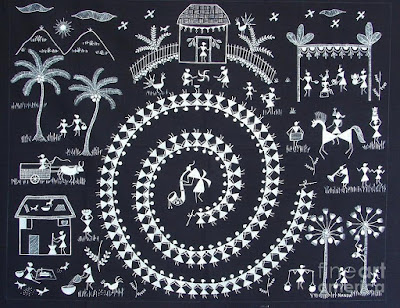Where Ghats will live forever……BANARAS
Benaras, an immortal city well known as Varanasi is a divine
and sacred place located on the banks of Ganga in Uttar Pradesh. Regarded as a
cultural centre, Varanasi is also called as Kashi- City of lights. In 1737, Mughals granted an
official status to Benaras where numerous eminent scholars and preachers
visited. This holy city is popular for its Ghats which are 87 in number and
majority of them were built during Maratha reign.
Below are 10 major ghats from this holy city that you should see if you plan to visit Benaras.
1. ASSI GHAT: This is the southernmost ghat where foreign
scholars, researchers and students reside. Also noted as Moholla Assi, this enticing place is the first destination of every visitor in
the city. It is situated at the junction of river Ganga and Assi where renowned
Indian poet saint, Tulsi Das has written his Ramchitramanas.
2. DASHASWAMEDH GHAT:With its astounding view, this ghat
is considered as one of the prime ghats of Varanasi, alongside which the Famous
Vishwanath temple is placed. According to Hindu mythology, it is believed that
the main purpose for creation of this ghat by Lord Brahma was to gratify Lord
Shiva.
3. LALITA GHAT: Situated on the Ganges, this ghat is
specified after Hindu Goddess Lalitha. Build by Rana Bahadur Shah, king of Nepal
in the initial 19th century
it abodes prominent Nepali temple as well as Lalitha Gauri temple.
4. MANIKARNA GHAT : It is one of the primeval ghat, well known for its deep essence in Indian mythology and most noted as
Hindu cremation site. It is one of the Shaktipeeth as Mata Sati’s Ear ornament
had fallen here.
5. MUNSHI GHAT: Located at Varanasi, which is known for
its multi-ethnic artistic traditions , this ghat was built in 1912 and named
after Shridhara Narayana Munshi, finance minister of Nagpur.
6. SANT RAVIDAS GHAT: It is one of the largest ghat situated
on the southern edge of the heritage city, Varanasi. This ghat was created in
the year 2008 and inaugurated in the year 2009 by Indian Politician Mayawati.
7. TULSI GHAT: This ghat was earlier recognised by the
name of Lolark Ghat and later came to be known after Great Indian poet,
Tulsidas who wrote the Ramchitramanas.
8. SCINDIA GHAT: Built by Scindias, this ghat is believed
as the birthplace of Agni, Hindu God of Fire according to mythology and above it,
Kashi’s most significant sacred temples are enshrined.
9. GANGA MAHAL GHAT: Elevated at 72.35 metres, this ghat
was created during the rule of Narayana dynasty in 1830 alongside river Ganga.
10. BACHRAJ GHAT: This exquisite ghat has three Jain
shrines on the banks of the river and also called as Jain ghat.




Comments
Post a Comment